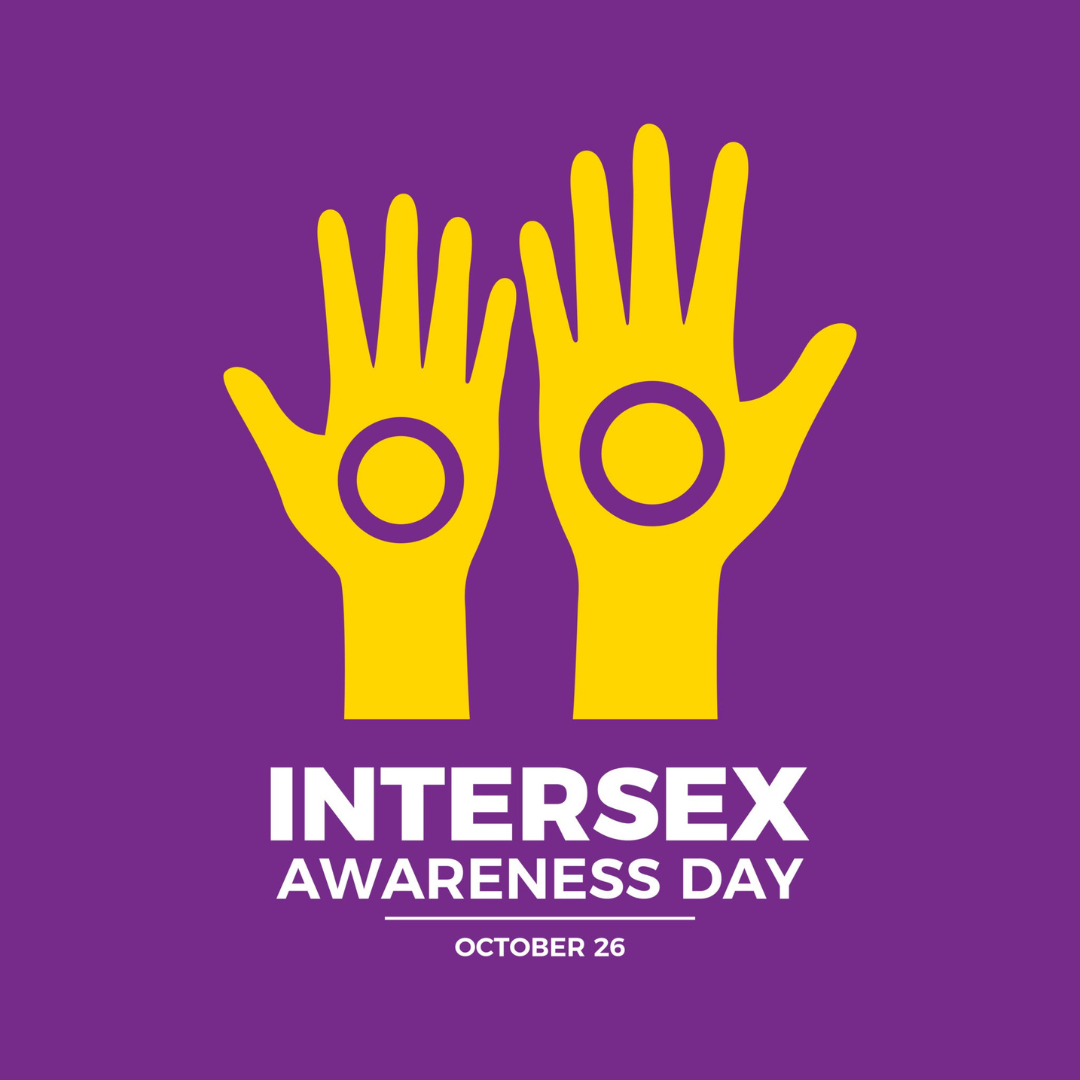
On October 26th, the LGBTQIA+ community and allies worldwide mark Intersex Awareness Day — a vital observance dedicated to raising visibility for intersex people, challenging harmful stereotypes, and advocating for human rights. In 2025, it falls on Sunday, October 26, a perfect opportunity to honor intersex voices and demand change where it’s still desperately needed.
Too often, intersex identities are erased or misunderstood. Intersex Awareness Day shines a spotlight on truth: intersex people have always existed, and they deserve to live openly, safely, and proudly without stigma or forced medical interventions.
What Does It Mean to Be Intersex?
Intersex is an umbrella term for people born with physical sex traits (such as chromosomes, hormones, or anatomy) that don’t fit typical definitions of male or female. These natural variations are more common than most realize — estimates suggest around 1.7% of the population is intersex, roughly the same percentage as people with red hair.
Being intersex is about biology, not identity. Some intersex people identify as male, female, both, or neither. Others identify as nonbinary, genderqueer, or intersex itself. Each journey is unique, and that diversity is part of what makes the intersex community so rich.
The Origins of Intersex Awareness Day
Intersex Awareness Day commemorates October 26, 1996, when activists from the group Intersex Society of North America (ISNA) and allies protested outside a medical conference in Boston. Their demand? To end harmful, non-consensual surgeries on intersex infants and children.
That protest marked a turning point. It was one of the first public demonstrations for intersex rights in the United States, sparking conversations that still continue today. By celebrating this date, we honor the courage of those activists and recommit ourselves to ending intersex erasure and injustice.
The Struggles Intersex People Face
Despite progress, intersex people still face significant challenges:
- Non-consensual surgeries: Many intersex infants are still subjected to “normalizing” surgeries or medical interventions, often without medical necessity and always without their consent. These procedures can have lifelong physical and psychological consequences.
- Stigma and secrecy: Families are sometimes told to hide an intersex child’s traits, leading to shame and isolation.
- Legal erasure: In many countries, intersex people aren’t recognized in law or policy, leaving them vulnerable to discrimination.
- Healthcare discrimination: Intersex adults may face barriers to respectful, informed healthcare.
- Lack of visibility: Intersex identities are rarely represented in media, sex education, or LGBTQ+ spaces.
These injustices make awareness campaigns like Intersex Awareness Day essential. Visibility paves the way for equality.
Myths and Misconceptions About Intersex People
To truly honor intersex people, we must challenge harmful myths:
- “Intersex is rare.” In fact, intersex traits are as common as red hair.
- “Intersex means hermaphrodite.” That outdated, stigmatizing term is inaccurate and harmful. “Intersex” is the correct, affirming language.
- “Intersex people are confused about their gender.” Gender identity and biological traits are separate. Intersex people can be men, women, nonbinary, or anything else — just like anyone.
- “Surgeries are necessary.” Most so-called “normalizing” procedures are cosmetic, not medically needed. What’s truly necessary is informed consent and bodily autonomy.
Intersex Joy and Culture
While much of the conversation around intersex lives focuses on harm and erasure, Intersex Awareness Day is also about joy and resilience.
Intersex people are artists, writers, athletes, parents, leaders, and activists. They contribute to every part of society while also building vibrant intersex-led movements. Flags of yellow and purple (colors chosen because they aren’t associated with traditional gender binaries) wave proudly at Pride marches, conferences, and community events.
Celebrating intersex joy means recognizing not just survival, but brilliance — the creativity and strength that comes from living authentically.
How to Show Up for Intersex Awareness Day
Here are some ways to mark October 26 and support the intersex community:
- Learn and Share
Educate yourself with resources from intersex-led organizations like InterACT Advocates for Intersex Youth or OII (Organisation Intersex International). Share what you learn on social media. - Amplify Intersex Voices
Read intersex memoirs, watch documentaries like Intersexion, and follow intersex activists. Centering intersex perspectives is key. - Challenge Medical Harm
Speak out against non-consensual surgeries on intersex infants. Advocate for laws protecting bodily autonomy. - Create Visibility
Display the intersex flag, host discussions, or include intersex education in classrooms and workplaces. - Celebrate Intersex Joy
Spotlight intersex creators, artists, and community leaders. Awareness is about more than struggle — it’s also about pride.
Intersectionality and Intersex Lives
Intersex people live at intersections of multiple identities. An intersex person may also be queer, trans, a person of color, disabled, or an immigrant — each layer shaping their experiences of stigma or support. Recognizing this intersectionality is essential to building inclusive movements that leave no one behind.
Why Intersex Awareness Day Matters
For too long, intersex people have been forced into silence — erased from sex education, ignored by policymakers, and subjected to medical harm. Intersex Awareness Day flips that script. It declares: intersex people are visible, valuable, and deserving of dignity.
It’s a reminder that the LGBTQIA+ umbrella is vast, and every stripe of our rainbow matters. True queer liberation means standing with intersex people against secrecy, stigma, and injustice.
Looking Ahead
The movement for intersex rights is gaining momentum. Countries like Malta, Germany, and Iceland have passed laws banning unnecessary medical interventions on intersex infants. More schools and organizations are including intersex education. And slowly, media is beginning to tell intersex stories with authenticity.
But there’s still much work to do. Intersex Awareness Day is a call to action: to educate, advocate, and celebrate. Because until intersex people live free from harm and full of pride, our fight for equality isn’t finished.
In Solidarity, Always
– Ryder
Discover more from Ryder Tombs
Subscribe to get the latest posts sent to your email.


